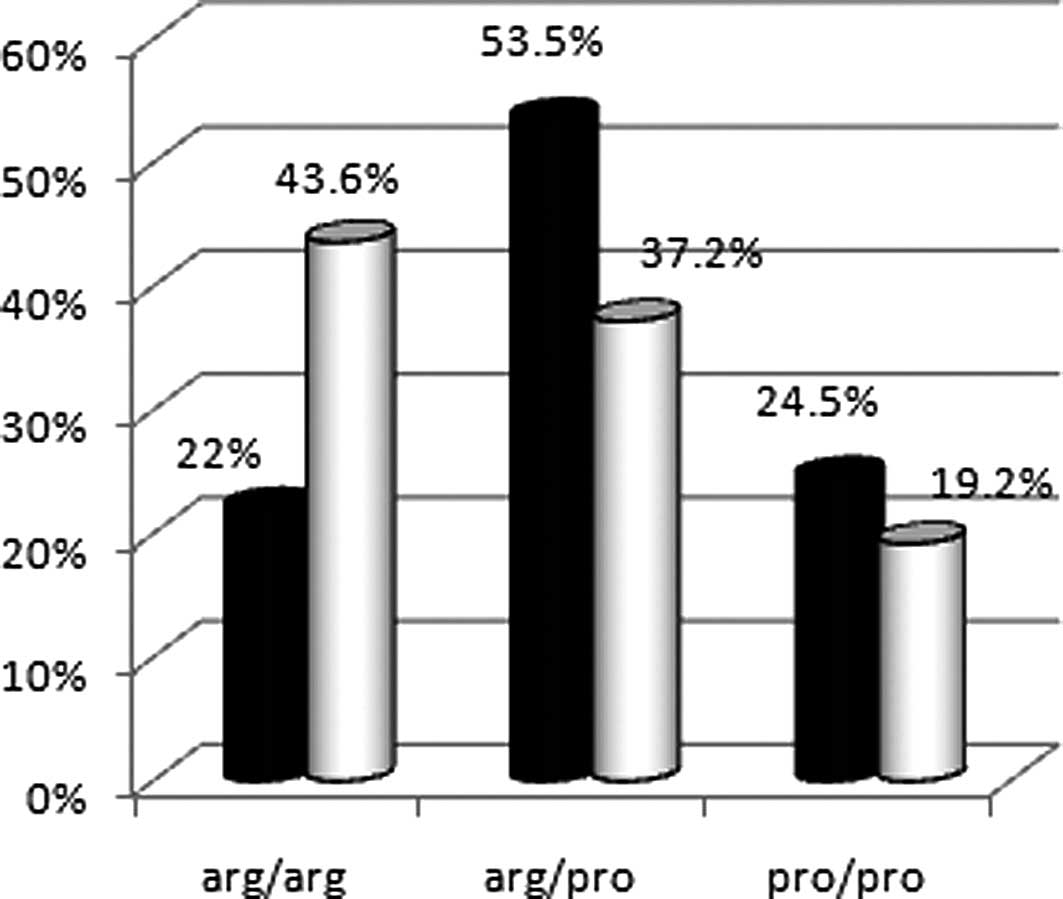Contribution of retinoblastoma LOH and the p53 Arg/Pro polymorphism to cervical cancer
- Authors:
- Published online on: June 11, 2012 https://doi.org/10.3892/mmr.2012.942
- Pages: 473-476
-
Copyright: © Eltahir et al. This is an open access article distributed under the terms of Creative Commons Attribution License [CC BY_NC 3.0].
Metrics: Total
Views: 0 (Spandidos Publications: | PMC Statistics: )
Total PDF Downloads: 0 (Spandidos Publications: | PMC Statistics: )
Abstract
Epidemiological studies indicate that infections by certain types of human papillomaviruses (HPVs) are causally linked to the development of cervical cancer. It is also known that HPV infections alone do not cause progression to cervical cancer, as additional genetic changes such as loss of distinct chromosomal regions, inactivation of tumor-suppressor genes and activation of oncogenes must also occur in order for malignant transformation to take place. In the present study, 78 patients diagnosed with cervical cancer and 36 cervical cancer-free cases (control) were analyzed for high-risk HPV genotypes (16 and 18) by polymerase chain reaction (PCR). Loss of heterozygosity (LOH) of the retinoblastoma gene (Rb) at two polymorphic intronic sites (intron 1 and 17) and the p53 polymorphism in codon 72 were detected by RFLP and allele-specific PCR, respectively. HPV 16 and 18 were found at frequencies of 93.6 and 8.3% in the cervical cancer and control samples, respectively. LOH was detected in 63% of patients in intron 1 and/or intron 17. p53 allele frequency for Arg/Arg was 43.6% (34/78), for Arg/Pro 37.2% (29/78) and for Pro/Pro 19.2% (15/78). The relative risk (RR) of LOH and Arg/Arg alone was 1.7 and 1.1, respectively, while the combined RR for Rb LOH and p53 Arg/Arg was 2.5. The present study showed a significant association of the chromosomal allelic loss of Rb in Sudanese cervical cancer patients, while no such association was observed with other parameters, such as clinical stage and degree of differentiation; hence, it cannot be a determinant of tumor behavior in cervical carcinoma. Although the p53 arginine allele is itself an important risk factor for cervical cancer, the combined risk with LOH of Rb, which appears to be greater, might indicate a possible epistatic effect of the two genes/polymorphisms.










